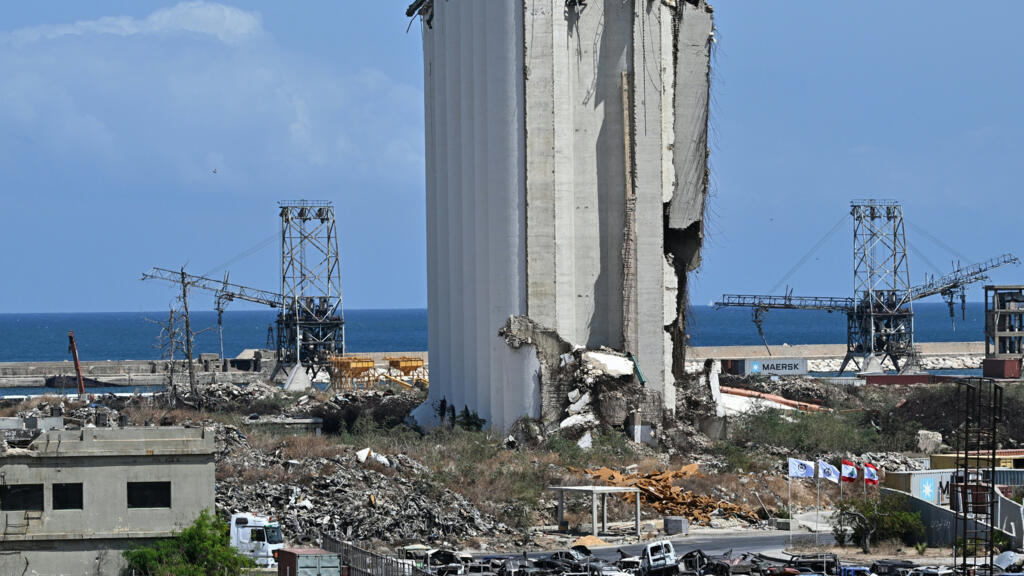Emergency services were completed with a scene of destruction. On Sunday evening, the gray-yellow cars of a regional train derailed with each other near Riddingan in Southwest Germany and crashed.
It was soon clear that the train driver, a trainee and a passenger were killed in the accident. Out of about 40 passengers, more than 40 were injured, some of them seriously.
Heavy rains in the area clearly overflowed a sewer shaf, causing a landslide directly on the railway line and derailed the train.
As man -made climate change increases the frequency of heavy rains, storms and other extreme weather events, railway is affected.
Trains are still safe than cleaner and cars
Overall, however, traveling by train is not only more durable than flight, it is still safe than driving cars. Furthermore, in recent years, the European Union region has seen a decline in ambience from train accidents.
To prevent landlides and road floods during heavy rains, the German railway company Dutash sister is working on the heavy rain scheme: when the water damages a part of the railway, it is usually detected before the next train approach.
Floods in the past have been a serious problem, for example, 2021 flood disaster and neighboring areas in West Germany, killing 185 people.
Railway lines through the AHR Valley and the neighboring Eifel mountain range are still partially closed for traffic. On the Ahar River, the floods destroyed a total of 15 railway bridges. There is a need to rebuild several bridges in the Eifel region.
New bridges are being designed to improve with extreme weather. New structures want to do large -scale central columns, to come into contact with water pressure and debris during floods.
A large part of the investment of about € 500 million ($ 578m) is infected on electrification of two lines, which was previously served by the diesel engine.
Once power for electric vehicles comes from renewable energy sources, they will emit much less greenhouse gases than diesel locomotives.
How to protect trains from fire and strong wind?
However, the early summer of this year was marked less than rain in large parts of Germany than the period of heat and drawwat. Results with fire fire and infrastructure of rail forced the connection to cancel or resume the connection.
To reduce this, railway teams regularly trim the vegetation in a six -meter wide corridor with tracks.
By 2023, Deutsche Bahn used the controversial herbicide glyphoset, where it uses less environmentally harmful pellergonic acid.
Since 2024, Dutash Sister is conducting test whether the risk of fire can be reduced by watering embankments with minimal furnished trains. This technique is mainly intended for use during dangerous tasks, discovering as welding tasks on the rail during the drawt period.
Train traffic is threatened by strong winds that can bring down trees from outside the six meter security sector. Thesis trees are monitored by the AI system of digital vegetation management, Railways. Fed with satellite paintings and video recording of specific routes, it is designed to issue a warning of potentially dangerous trees.
Tigers more defects on a hot climate line
To customize its infrastructure for climate change, the German Railway Company advised the Potsdam Institute for Climate Impact Research.
For a study published some time before the 2021 AHR Valley flood, on the days above 30 ° C (86 Fahrenheit), every regional railway districts of Germany have an average of 4.1 more mistakes in average of 4.1 more than 30 degrees. At temperatures above 32 degrees, the figure increased to 5.1 more mistake reports.
In the past, the rail was also bent due to excessive heat. On July 28, 1969, a connection between Dasseldorf and Leapzig in West Germany in East Germany derailed about 40 kilometers from the internal-German border, killing four people.
At that time, the rail was galled in a way and fasted that allowed steel to expand to all directions at high temperatures.
Nowadays, the rail tracks can only expand up and down. In Italy, tracks are also painted white on their edges so that they absorb lower heat from sunlight than traditional rail tracks, which develop rustish-brown in years.
According to Deutsche Bahn, there is no problem for railway subjects up to 60 ° C (140 Fahrenheit). The switch should be cooled only as the search for flexible parts and as part of the “climate-flexible railway technology” program, components in signaling technology can be made more resistant to the period of heat growth.
There is a problem for heat train and its passengers. Engine can overheat, and the air conditioning system can be pushed to their limits.
Each car has two independent air conditioning systems to keep passenger comments in the latest generation of ice 4 express trains. They are designed to work simply at an outer temperature of -25 degrees as they do on hot days of +45 degrees.
This article was the original published in German.


